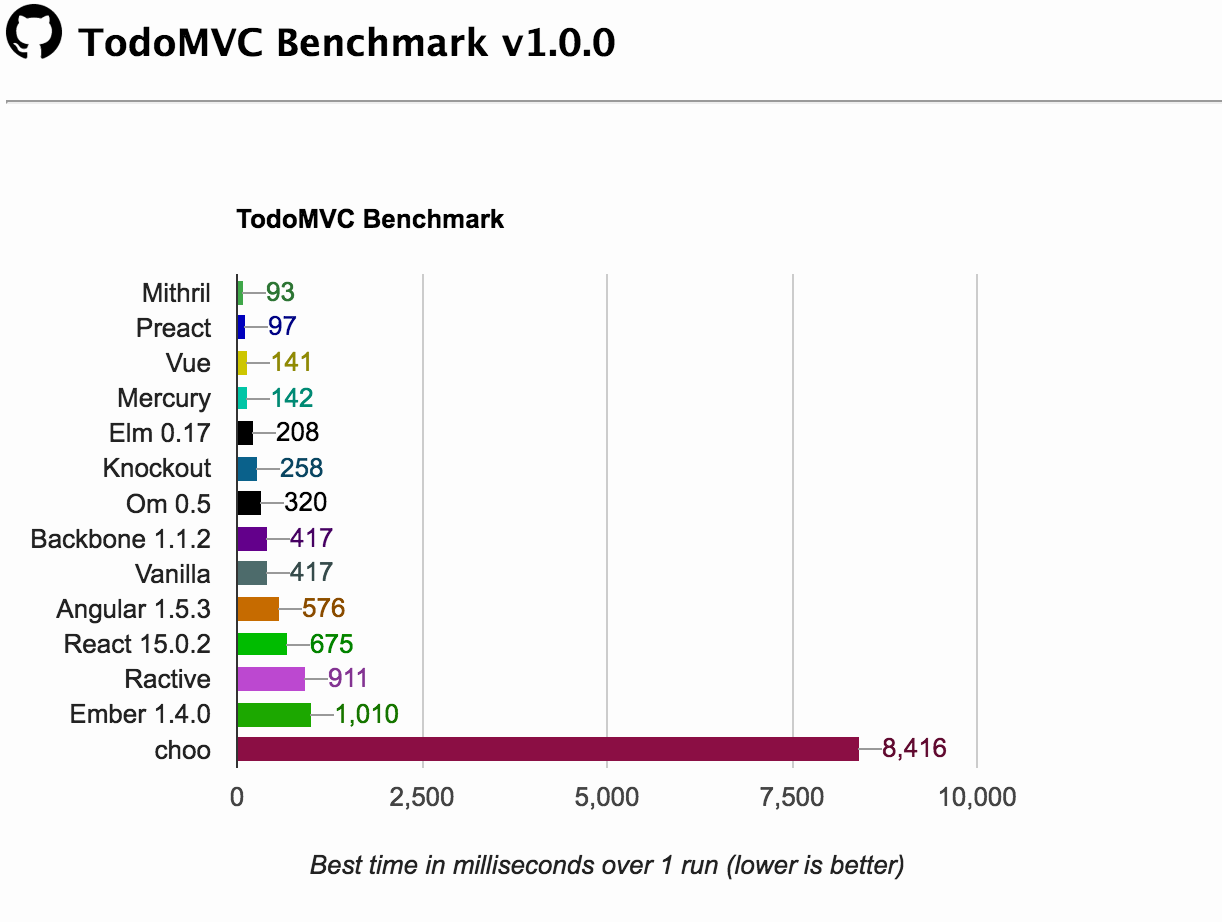You Might Not Need React
React offers a great development experience but suffers from poor performance. This blog post introduces Preact, a React alternative with superior performance but reads and feels like React.
Since it was released in March 2013, React has been taking over front-end development by storm. Unlike most popular front-end that are template based, React offers a component based approach to front-end development. While React often requires a much larger boilerplate compared to other front-end frameworks, its continues to attract a large following as front-end developers find its declarative components easy to reason about. Coupled with its functional coding style which minimizes side-effects, React allows you to manage large front-end projects with ease.
The cost of using React, however, is its poor performance and bloated codebase for its relatively small set of offerings.

Poor Performance
The figure above benchmarks a variety of popular front-end libraries/frameworks based on its todo app performance. Despite employing a virtual DOM which is associated with better performance, React ranks extremely low on the benchmark.
Bloated Codebase
As it stands today, React's library is ~45kb large. This makes React unsuitable for mobile web apps where data usage and internet speed are of concern. In fact, Uber recently switched away from using react on their mobile web apps in favour of using preact due to React's poor performance on 2G networks.
Preact
This brings us to the crux of this blog post - Preact.
What is Preact?
- Preact is a lightweight alternative to React with the same ES6 API.
- Preact weighs in at 3kb compared to React's much larger codebase.
- Preact is ranked 2nd on the todo app benchmark.
But most importantly, Preact's code reads and feels like React. It offers the same declarative, functional programming style that React offers and supports jsx, states and React's component lifecycle methods.